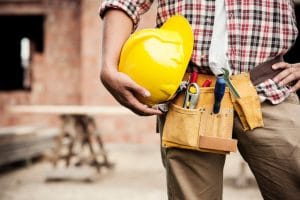TBI can have severe, long-lasting effects.

But TBIs can happen in almost any environment — including on the job. In fact, including to a recent report from the National Institute for Occupational Safety and Health (NIOSH), a shockingly high number of American workers died or were seriously injured each year due to traumatic brain injuries. The study found that between 2003 and 2010, an average of 315 construction workers died from TBIs. The employees at highest risk are those who work at smaller construction companies, with fewer than 20 employees, and those who are older and foreign-born. The study found that nearly 25 percent of all construction worker deaths were a result of brain injuries.
This report may be surprising to many Americans, as brain injuries are not a typical hazard associated with construction sites — falls from high scaffolding, electrocution, equipment malfunction or other more obvious issues may be what we think of first when we consider what is dangerous about a construction site. But TBIs are a significant risk at construction sites, including the 50% of brain injuries that result from falls.
Traumatic brain injuries can vary in severity, with symptoms ranging from headaches and nausea to loss of consciousness. It can take weeks to months to recover from a mild case of TBI. More severe TBIs may result in life-long impairment or even death.
So what can employers do to prevent TBIs on the job? While the NIOSH study specifically focused on construction sites, all employers would be wise to institute safety protocols to minimize the risks of falls and to protect employees’ heads when necessary. Fall protection could include using a harness system when appropriate, controlling access to certain high risk areas, setting up guardrails, and providing proper protective gear. Employees should also be trained properly, and should never be pushed to work past capacity or what is safe. While it may take more time to put on a safety harness before working up high, in the end, it will cost the company more money if an employee is injured or even dies because he or she fell and suffered a traumatic brain injury or another type of injury from the fall.
Brain injuries are just one type of harm that works can suffer while on the job. Exposure to chemicals, repetitive motion injuries and other types of injuries may also be covered through the workers’ compensation system. Whether you work in the construction industry or in an office, the workers’ compensation system protects you by providing a no-fault method of obtaining treatment and benefits for your workplace injuries. If you have been hurt at work, contact PLBH today at (800) 435-7542 or info@plblaw.com. Our team of workers’ compensation attorneys will aggressively pursue your right to benefits, and will work with you to make sure that you get the compensation that you deserve for your injuries. Initial consultations are always free!
